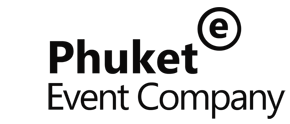Business & Professional
Agile 3 Days Bootcamp in Seoul
Course Description: Scrum, Extreme Programming, Lean, Feature Driven Development and other methods each have their strengths. While there are significant similarities under the Agile umbrella, each method brings specific tools for team success. Rarel
- Seoul South Korea
- Start: Jul 19 2022 00:00
- Finish: Dec 01 2024 00:00
- Time zone: Asia/Seoul
- Dec 11 2019
- 66
- 1493 Views

Course Description:
Scrum, Extreme Programming, Lean, Feature Driven Development and other methods each have their strengths. While there are significant similarities under the Agile umbrella, each method brings specific tools for team success. Rarely do organizations adopt one methodology in its pure form. Rather, success is achieved by combining best practices.
In this three-day Agile Boot Camp, you will put the skills, tools and techniques you are taught to work. The classroom will be broken up into Agile teams and an expert instructor will drive each team through the Agile process: from vision down to daily planning and execution. Your instructor will answer questions with real-world experience, as all of our instructors have Agile experience “in the trenches.” You will leave the class with practical knowledge and a clear roadmap for success.
Course Topics:
DAY 1
1. Agile Introduction & Overview
2. Forming the Agile Team
3. Product Vision
4. Focus on the Customer
5. Creating a Product Backlog
6. Product Roadmap
DAY 2
1. Prioritizing the Product Backlog
2. Estimating
3. Release Planning
4. Story Review
DAY 3
1. Iteration Execution
2. Measuring & Communicating Progress
3. Iteration Review & Demo
4. Retrospectives
Course Outline:
Agile Introduction and Overview
● Why Agile
● Agile Methods
● Agile Benefits
● Agile Basics – understanding the lingo
Forming the Agile Team
● Team Roles
● Process Expectations
● Self organizing teams – where flexibility exists
● Communication – inside and out
Product Vision
● Five Levels of Planning in Agile
– Vision
– Roadmap
– Release
– Iteration
– Daily
● Importance of Product Vision
● Creating and communicating vision
Focus on the Customer
● User Roles
● Customer Personas
● Customer Participation
Creating a Product Backlog
● User Stories
● Acceptance Tests
● What makes a good story (sizing and substance)
● Story Writing Workshop
Product Roadmap
● Product Themes
● Importance of Focus
● Creating the Roadmap
● Communication
● Maintaining the Roadmap
Prioritizing the Product Backlog
● Methods for prioritizing
● Building Trust
● Expectations for prioritizing stories
Estimating
● Actual vs Relative estimating
● Story Points
● Planning Poker
● Estimating Team velocity
Release Planning
● Utilizing velocity
● Continuous Integration
● Regular cadence
Story Review
● Getting to the details
● Methods
● Keeping cadence
Iteration Planning
● Task breakdown
● Time estimates
● Definition of “done”
● Active participation
Iteration Execution
● Collaboration – value individuals and interactions
– Communication
– Daily Standup (Scrum)
– Taskboards
● Cadence
Measuring and Communicating Progress
● Actual effort and remaining effort
● Burndown charts
● Tools and Reporting
● Your company specific measures
Iteration Review and Demo
● Iteration Review
● Demos – a change from the past
Retrospectives
● What we did well
● What did not go so well
● What will we improve
Bringing it All Together
● Process Overview
● Transparency
● Cadence
● Team Roadmap
Course Features:
Learning Objectives:
● Structure a team with generalizing specialists so the team can develop working software incrementally.
● Practice and maintain a regular cadence when delivering working software each iteration.
● Follow the team approach; start as a team, finish as a team — and focus on delivering value to the organization.
● Gain knowledge and understanding of Agile principles and why they are so important for each team.
● Embrace the five levels of planning and recognize the value of continuous planning.
● Build a backlog of prioritized and estimated user stories that provides emergent requirements for analysis and foster customer engagement and understanding.
● Engage in more effective estimating (story points) and become more accurate by being less precise.
● Create accurate Agile release plans that connect you back to business expectations – including hard date commitments and fixed price models.
Certification:
Once after the training you receive course completion certificate from Mangates
Who can Attend?
Because this is an immersion course and the intent is to engage in the practices every Agile team will employ, this course is recommended for all team members responsible for delivering outstanding software. That includes, but is not limited to, the following roles:
● Business Analyst
● Technical Analyst
● Project Manager
● Software Engineer/Programmer
● Development Manager
● Product Manager
● Product Analyst
● Tester
● QA Engineer
● Documentation Specialist
























